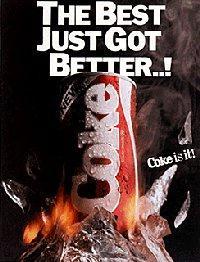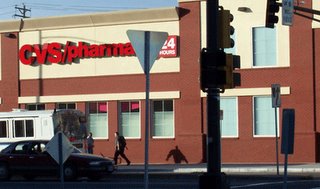
Yes, folks, New Coke is back, complete with the OTT ad campaign fanfare. This time, though, the less carbonated, sweetened, redesigned consumer good isn’t a soda pop at all, it’s a newpaper.
As the redesign guide will tell you, the changes at the strib go beyond the superficial. They’ve juggled some of the content, adding a “world” section, making most of the columns shorter, and adding internet-y leads and infographics.
I first heard mention of the redesign when ex-PiPress columnist Brian Lambert talked it down in his article in this months’ The Rake, which is fast becoming the premier venue for good local writing. In his lengthy scribble, Lambert rather unusually pillories the mainstream media for demanding excessive profit margins.
Even so, despite consistent-to-precipitous circulation and ratings declines, media empires like Gannett, Knight-Ridder, Viacom, GE, and Rupert Murdoch’s News Corporation are still providing their shareholders with a satisfactory return on investment. To paraphrase Molly Ivins, their profit margins have been pushed from merely excessive to obscene. They are floating the margins in part by denuding their labor-intensive news operations to squeeze out more cash for shareholders, a form of self-cannibalism.
...
But [former Strib editor Tim] McGuire said, “I think Len is right. He’s also correct when he says one of the impediments to that adaptation is excessive newspaper profits. Len says fifteen percent profit margins would be plenty.” McGuire then added, “I do believe it is crucial that newspaper executives face up to the fact that they are milking their industry for profits and failing to invest in the long-term health of the news-gathering and the advertising franchise.” He mentioned The Vanishing Newspaper, a new book by Philip Meyer, in which the author describes the current corporate news media dynamic as one of “harvesting the assets.”
Talk all you want about Fox News and the current state of journalism, but Lambert is right on target. It’s the drive for profit that’s eating away at the mainstream media. The basic dilemma: muckraking is expensive; puppies, kittens and crime are cheap.
But, why mess with a good thing? I liked the Strib as it was, and I wasn’t alone. Amongst all the major dailies, I’m pretty sure the Strib was the only one to post recent circulation growth. (Despite the impending circulation padding accusations.) I was a big fan of the Op-Ex section, which has been annoyingly renamed “OpinionExchange.”
Why did a successful newspaper feel the need to remake their image? The answer they most often cite is that they’re trying to attract young readers.
My favorite local sports blogger and young reader, Aaron Gleeman, had this to say:
This broad subject is always in the back of my mind, but I began really thinking about it again once I saw the Star Tribune's re-design. It strikes me that the two things the newspaper business has focused their attention on of late are playing down the quality of non-traditional forms of media and re-designing their product in largely superficial ways.
In the Star Tribune's case they've changed the look of their paper, from the fonts and headlines to the pictures and sections. They've also added additional content, of course, but for the most part it is a re-shuffling of sorts. While I'm sure tons of money and man hours went into the paper's new look, in the end it is little more than putting a fresh coat of paint on a rusty car.
I don't read the Star Tribune because it looks good. I don't care what font they use, what size the headlines are, or how big the pictures of the columnists are next to their columns. I don't care if they fill each page with a whole bunch of boxes and sidebars or plaster gigantic, full-color pictures next to each article. In fact, the truth is that I barely read the Star Tribune at all.
The beauty of living in 2005 is that you can read whatever you want from wherever you want. The hold newspapers had on people is all but gone and no one has to settle for what falls on their doorstep each morning. Meanwhile, newspapers like the Star Tribune continue to think it is about something other than the content. You can re-design as much as you want and make the paper look like an extraordinary work of art, but you've still got to offer me something I want to read.
I just read Robert Putnam’s sociological groundbreaker Bowling Alone, and he talks about how newspaper readership trends are part of very broad, nationwide cultural change. Each consecutive generation feels more independent, and less publically oriented, than the one before. And each consecutive generation is less likely to read the newspaper.
However, many of the kids today do appreciate good writing. The free weeklies, The Onion, The Daily Show, and a thousand blogs all get young readership. If the strib really wanted to increase its relevance, they’d go in this direction, and start filling the page with more unusual, personal, and local stories.
Of course, they can’t really change their content, partly because of the dictates of corporate ownership, but also because of the journalists union. The Strib had an incident a few months ago where they sued McLatchy because the paper had published some sort of non-guild article. And, north of the border, journalists at the CBC just ended a months long strike where they'd protested against the encroaching presence of temporary and part-time employees.
Much as I support the unions generally, they’re standing in the way of making the mainstream media relevant to young readers. The Strib ought to branch out and start performing the service that many blogs perform: filtering information from diverse sources. That would mean granting column space to non-guild writers, increasing access for regular people, and publishing a lot more local, personal journalism.
The news business changes constantly. When radio first emerged during the 20’s, it saturated the country in a matter of years. TV did the same in the 50’s, and the only way the Strib is going to be the hub of news reporting twenty years from now is if their journalists open the door and let everyone else onto the page.
Update:
I just ran into a Strib reporter, and I was surprised to get a candid discussion of problems at the paper. Apparently the folks in the newsroom feel understaffed, which I guess is no surprise. S/he complained that the paper had just hired a new fashion reporter, and that s/he thinks they really skimp on local coverage. They've only got one person, Rochelle Olson, covering all the mpls elections. Let me tell you, with the complex, horizontal city structure, that's a tall order. And though she's doing a good job, the Strib's desire to cater to some abstract suburban ideal soccer mom type is a real problem for anyone who wants to see better quality writing in the newspaper.


